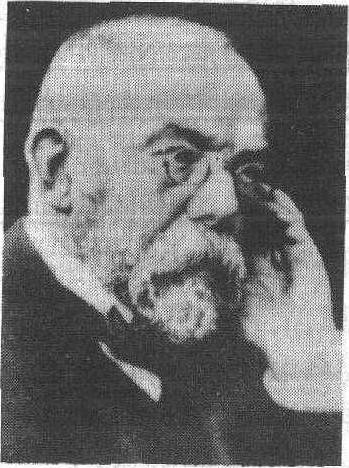科赫,R.1843~1910Robert Koch

德国细菌学家,结核杆菌的发现者,现代医学细菌学的奠基人之一。在细菌分离培养和紫色观察方面,科赫创造和改进了许多方法,特别是在1881年创造了固体培养,使单个细菌在固定的位置上发展为一个菌落,能有效地分离混杂的菌种,其助手佩特里 (J.Petri)发明了固体培养用的培养皿沿用至今。1876年德国牛炭疽病流行,科赫于1877年证实该病由特定的细菌所致,分离出炭疽杆菌; 1882年分离出结核杆菌; 1883年分离出霍乱弧菌; 1897年起研究并肯定了昆虫可成为病原菌的中间宿主。科赫提出鉴定病原菌的原则:特定的病由特定的微生物所致,患病动物体中能找到这种病原物; 这种病原物能使健康动物患同样的疾病;以新染病的动物体中能再找出这种病原物。这被称为科赫法则(Koch's Postulates)。科赫于1905年获诺贝尔生理学或医学奖。
- 五、扶贫开发的发展方向及拟采取的措施
- 五、技术进步与人才开发
- 五、抓好人才、技术培养,提高规划建设管理水平
- 五、抚州旅游区
- 五、改造“二流子”
- 五、改造中低产田
- 五、改革开放新时期的卫生工作
- 五、改革开放时期
- 五、改革开放时期的农村卫生
- 五、改革开放时期的农村经济
- 五、教育事业费和农村教育费附加
- 五、教育投入与新建、改造农村校舍
- 五、文化生活与医疗保健
- 五、文物保护与博物馆
- 五、斯里兰卡蚕桑援助项目
- 五、新中国成立后
- 五、新疆生产建设兵团
- 五、新疆维吾尔自治区水利厅
- 五、新疆维吾尔自治区流域规划委员会办公室
- 五、昭通地区
- 五、暴雨洪涝灾害
- 五、曲艺人物
- 五、本溪市
- 五、村民委员会
- 五、村镇建设